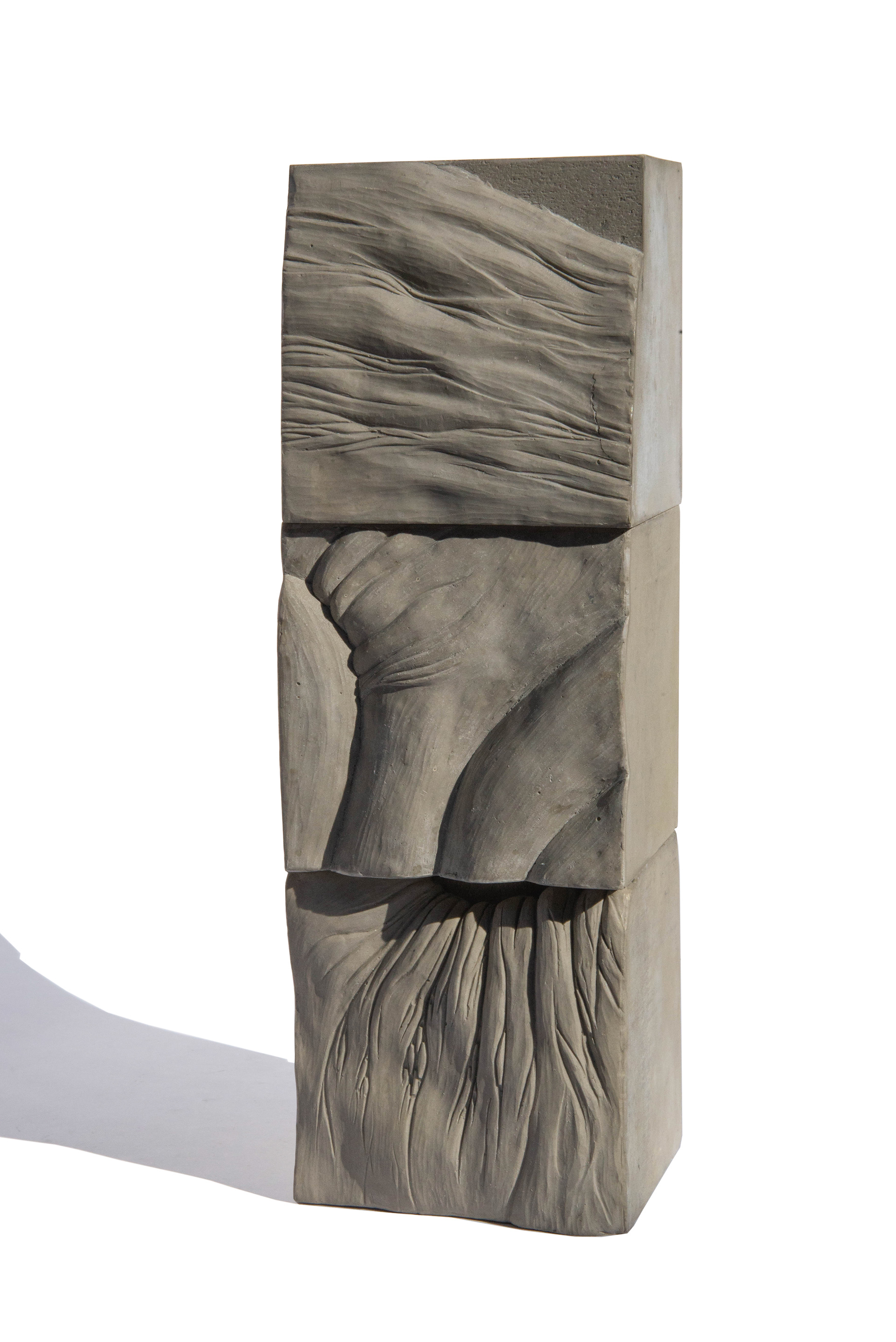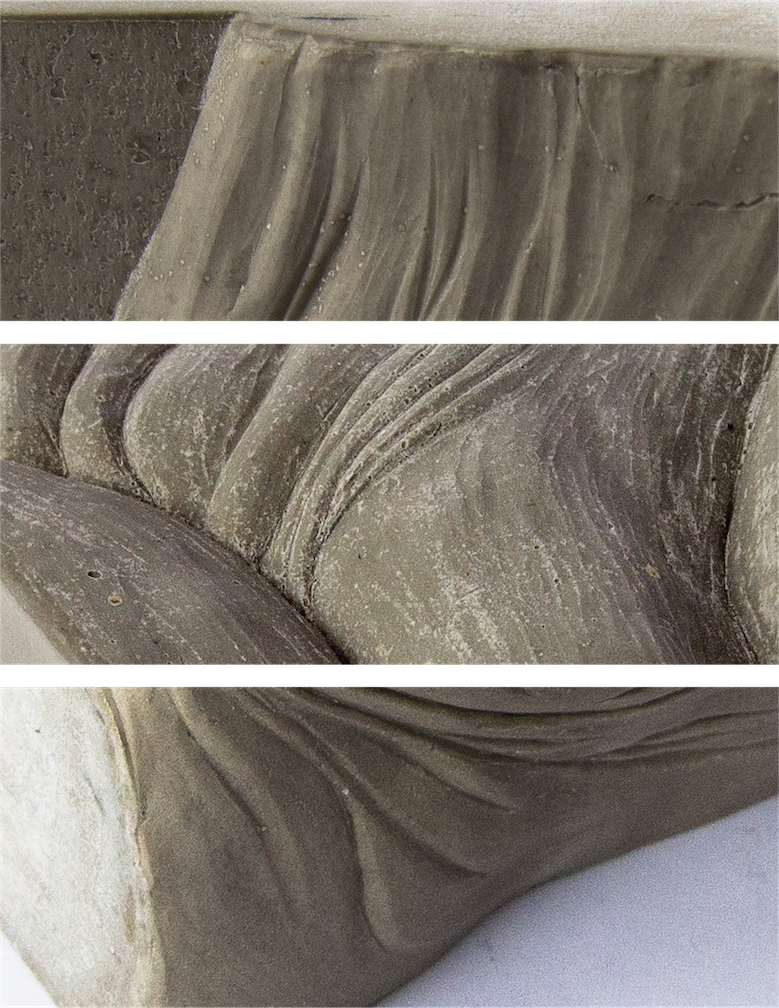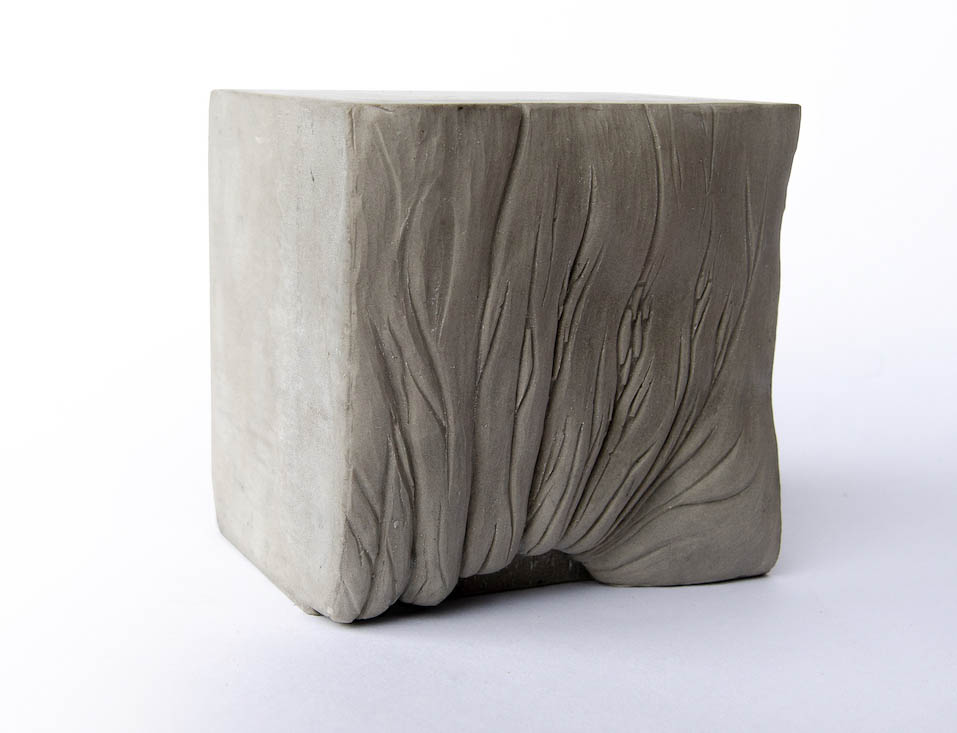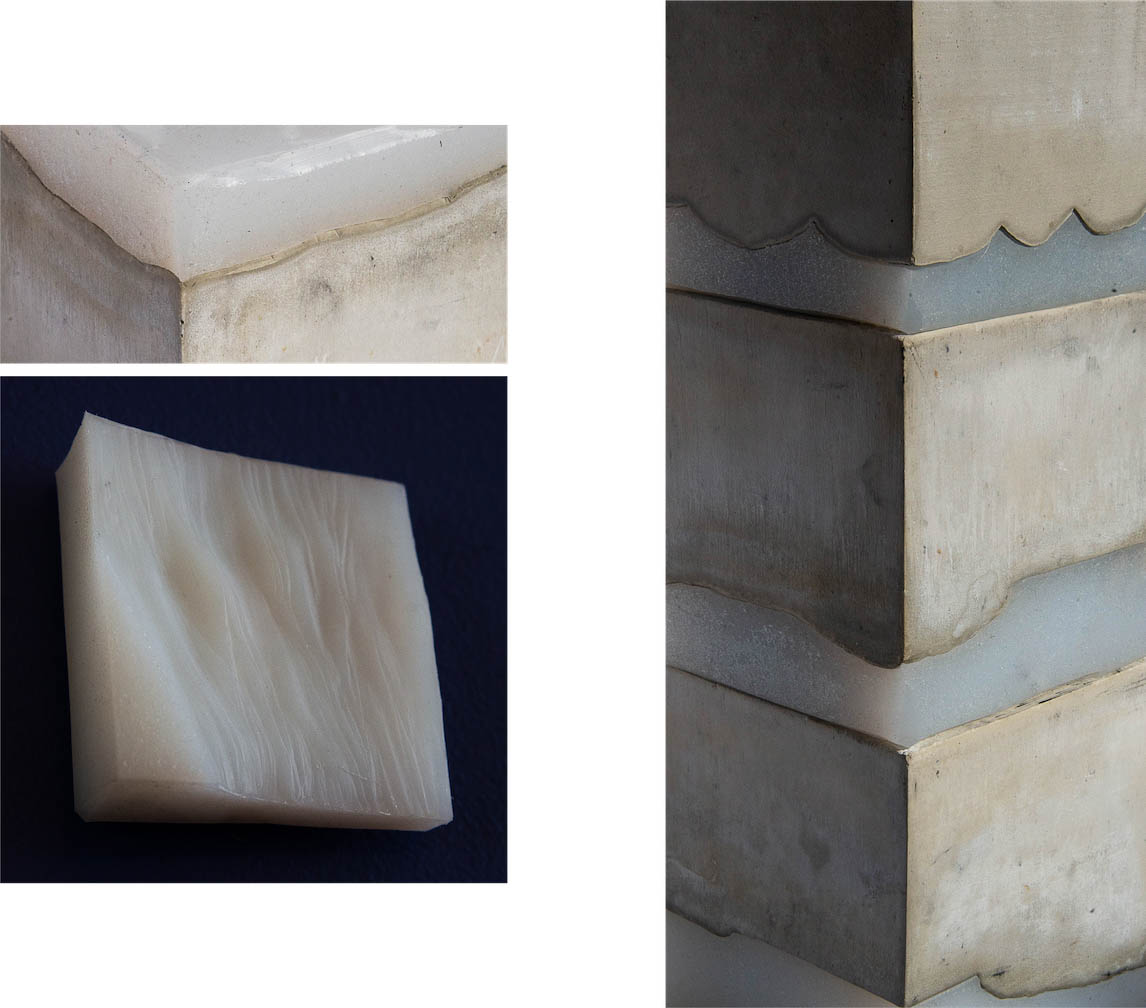Skin as Topography II
2019, rockite cement, silicone rubber, 4 x 4 x 4" each.



In this second iteration, I returns to my topographic skin drawings from two years prior. I concentrate less on mimetic representation and more on the process of change as my subject travels and transforms between materials. Throughout this piece, I explore the contrast between the expected softness of skin—rolling mountains and valleys—and the harsh cold form of the cement. I begin by translating the taut graphite renderings into the form of slippery polymer clay. Dark areas are codified as the lowest points of the sculpture and light areas as the highest. My process is not perfect; certain elements are lost in translation as I simplify and modify the original design to fit within the material constraints of polymer clay and my tools.
I gently smooth the clay skin with my fingers and add details, such as folds and texture, with a small wooden spatula. One of the three polymer clay molds cracked while baking. This fissure was then picked up by the silicone rubber negative and transferred to the final cement form—a physical imprint of mishaps that are inevitable in the process of experimenting. I investigate the way my representation of skin changes depending on the vessel that carries the surface of its weaving fabric. In stark contrast to cement, the squishy consistency of silicone rubber slabs, along with their semi-translucent character, most accurately represents the genuine texture of skin. As one holds the slabs in their my hands, they are filled with a simultaneous sense of fascination and discomfort.

